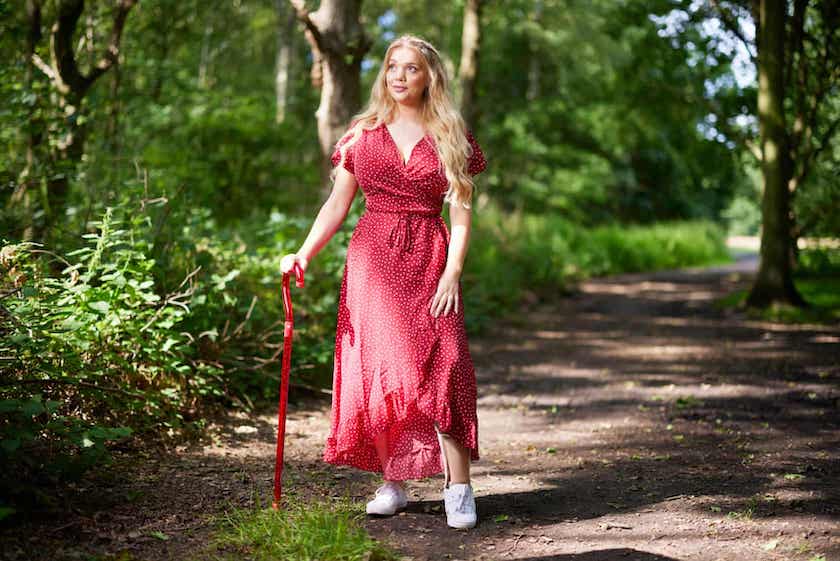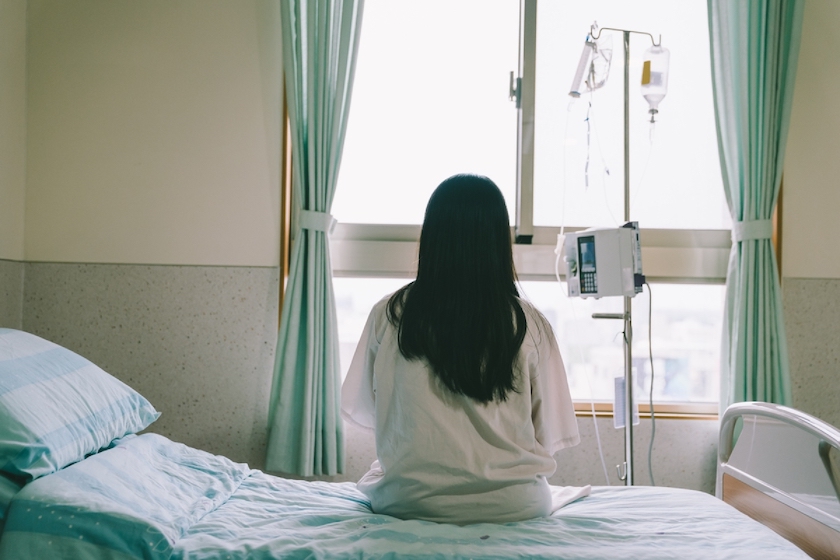In 2016, 20-year-old Lucy Dawson was sectioned for an apparent mental breakdown. Even though she had all the classic symptoms of encephalitis, she was misdiagnosed and left in a psychiatric ward until it was almost too late.
But medical negligence in women’s health is nothing new. Read Lucy’s story and the history behind it.
For centuries, doctors diagnosed women with “hysteria” – a condition characterised by emotional excess. In Western medicine hysteria was considered both a common and chronic disorder among women. Some of its symptoms included sexual desire, irritability, depression, and anxiety. In extreme cases, women diagnosed with “hysteria” were forced into insane asylum’s or underwent horrific and irreversible surgical procedures such as lobotomy or hysterectomy without consent.
The notion that women are somehow pre-disposed to negative behavioural conditions goes back to Ancient Greece, when the womb was thought to wander around the body and cause trouble wherever it went. This theory was rejected with the advancement of modern medicine, but the connotations persisted in Western popular thought for centuries. Today, researchers of medical history point to evidence that hysteria was simply a way to pathologize “everything that men found mysterious or unmanageable in women”.

They were mutilated or molested – clitorises cut off when sexual pleasure was deemed to be the cause, or ‘medically stimulated’ into orgasm when sexual pleasure was deemed to be the cure.
Supposed ‘cures’ usually involved punishment intended to turn a difficult woman into a docile one. They were mutilated or molested – clitorises cut off when sexual pleasure was deemed to be the cause, or ‘medically stimulated’ into orgasm when sexual pleasure was deemed to be the cure. Hysterectomies and oophorectomies were unnecessarily performed – often without the patient’s consent – with the intent to sterilise reproductivity and neutralise hormonal fluctuations. Not to mention the dreaded ‘resting cure’ which inspired a short story so psychologically tormented that it convinced the pioneer physician to abandon it as a form of treatment altogether.
While hysteria is no longer recognised as a medical disorder, women are far more likely than men to be told their symptoms are psychosomatic or the result of a mental illness. The implications of this can be devastating.
Lucy’s Story

In 2016, 20-year-old Lucy Dawson was sectioned under the Mental Health Act 1983 for an apparent mental breakdown. Even though she presented with all the classic symptoms of encephalitis, including confusion, personality change, hallucinations, and headaches, she was misdiagnosed and left in a psychiatric ward for three-and-a-half months.
During her time there, Lucy was given electroconvulsive therapy in a last-ditch effort to reset her brain, causing a seizure which made her fall out of bed onto an exposed radiator pipe.
Lucy recalls, “It was the end of November, so the pipe was as hot as it was ever going to be, and I lay on it half dead and having just had ECT, until an old lady screamed for help.”
Anti-psychotic medication had turned her from manic to catatonic, so she was unable to move or call for help on her own. When nurses finally discovered her, it was too late. She suffered third degree burns and was inexplicably paralysed in her left leg. Staff members falsely attributed this injury to one of many violent ‘breakdowns’ when friends and family started to ask questions.

In January 2017, Lucy was finally seen by a neurologist and tested for brain injuries. It was only then that she was diagnosed with anti-NMDA receptor encephalitis, a type of autoimmune disease where the body attacks otherwise healthy receptors in the brain. Lucy explains, “They call it friendly fire because your immune system identifies antibodies and healthy cells in the brain as being bad and attacks them.” This time, doctors explained that her paralysis was just another symptom of her disease.
Anti-psychotic medication had turned her from manic to catatonic; when nurses discovered her it was too late.
But Lucy was still not satisfied. She decided to hire a lawyer after being discharged from hospital and saw several specialists for her leg – none of whom could offer a real explanation. One day, a locum noticed the position of the scar the burn had left and checked it against a diagram for the sciatic nerve. It suddenly became very clear: the radiator had burned right through it. The damage was irreversible.
Since then, the hospital has apologised and launched a “robust internal investigation” to improve their standard of care for future patients. But Lucy insists nothing could ever make up for the physical and emotional trauma she endured at their hands.

Lucy is now a British ambassador for disabled modelling and works to increase representation in the industry. She says that her success as a lingerie model “came out of nowhere. Because I’ve got quite a curvy figure, brands were interested and that became my niche.” She goes on to say that helping other disabled women to reclaim their sexuality “makes me feel what I do is worthwhile.”
In the five years that have passed, Lucy has encountered countless women with stories just like hers from all over the world. Australia is no exception.
Click here to follow Lucy on Instagram
A Bigger Issue
One in three women has had their health concerns dismissed by their general practitioner according to the latest figures from the Australia Talks National Survey 2021. It found that women were twice as likely to feel dismissed as men.
For instance, endometriosis affects one in nine women in Australia, but it usually takes six-and-a-half years to get a diagnosis.
“We literally know less about every aspect of female biology compared to male biology” – Dr. Janine Austin Clayton, director of the US Office of Research on Women’s health.
Research shows that health care providers prescribe less pain medication to women than men after surgery. In general, women report more severe levels of pain, more frequent incidences of pain, and pain of longer duration than men, but are nonetheless treated for pain less aggressively.
“It’s a huge issue in medicine,” says Dr. Tia Powell, a bioethicist and a professor of epidemiology and psychiatry at the Albert Einstein College of Medicine in New York. Medical professionals may hold implicit biases that affect the way that women are treated, she said. “Medical schools and professional guidelines are starting to address this problem, but there is still much to be done.”
Karen Magraith, a GP and president-elect of the Australasian Menopause Society, said the gender gap extended beyond reproductive health issues.

“We have evidence heart disease in women is not recognised as early, not treated as effectively and women receive less evidence-based treatments than men do. I think that’s a good example of where women’s health is not as effectively treated as men’s health,” she said.
One of the main reasons for this is that women have been historically underrepresented in clinical trials for new drugs, treatments, and devices in Australia and across the world. And in the few instances where women have been included, the influence of sex and gender is often ignored. As a result, women are more likely to be withheld effective treatment and exposed to harmful side effects – including a higher incidence of adverse reactions when new (and insufficiently researched) drugs hit the market.
The result? “We literally know less about every aspect of female biology compared to male biology,” says Dr. Janine Austin Clayton, director of the US Office of Research on Women’s health.

It would seem that women are just too hard to study. For decades, women were excluded from clinical drug trials based on the unsubstantiated belief that fluctuations in hormones associated with the menstrual cycle would make results more difficult to analyse. When thalidomide was found to cause serious birth defects in the 1970s, women of childbearing age in the US were banned from participating in clinical research studies in order to ‘protect’ their reproductive capabilities. Even though this ban was lifted in 1993, and the inclusion of women was mandated in government-funded research, drug companies were not required to comply.
A 2008 report found that Australian Human Rights and Ethics Committees (HRECs) failed to enquire about the numbers of male and female participants in clinical trials. The same report showed that opinions were also divided on whether research cost and convenience justified excluding women from research.
As it currently stands, the Australian National Health and Medical Research Council (NHMRC) has no policy comparable to those in the US or Canada requiring researchers to test on both men and women.
But organisations like the George Institute are calling for policy reform in order to standardise the way sex and gender is collected in clinical trials in Australia. Their demands include gender specific reporting in academic journals and a more equitable balance of female and male patients in clinical trials.

In response to such demands, a spokesperson for the Department of Health pointed to the $535 million package set aside for female health as part of the 2021-2022 national budget. It serves to improve cervical and breast cancer screening programmes, provide Medicare subsidies for testing of IVF embryos for genetic faults, increase support for the mental wellbeing of new and expectant parents, and boost women’s health initiatives including the Periods, Pain and Endometriosis Program (PEPP-Talk) developed by the Pelvic Pain Foundation of Australia.
However, this package amounts to less than $46 for every woman over the age of 15. More can be done to help.
What You Can Do
Standard consultations at the GP last just 15 minutes. Here’s how to make sure your health concerns are heard.
Come Prepared
Plan what you intend to talk about before you arrive for your appointment. Write down any concerns and questions so you don’t forget. Be specific.
Tell Your Story
According to Leana Wen, MD, author of When Doctors Don’t Listen: How to Avoid Misdiagnoses and Unnecessary Tests, “doctors end up asking about symptoms rather than the story. But studies have shown that over 80% of diagnoses can be made just by listening… By that, they mean listening to the story, the open-ended story of what happened, rather than asking a list of yes-no questions”
Be sure to mention:
- When the symptoms started
- Whether any life event/action coincided with the onset of symptoms
- Whether the symptoms have appeared before
- Describe how it feels
- Whether the pain has increased/decreased
- How often you feel the pain
Take Someone with You
If you are dealing with a particularly complex issue, have a condition that makes it difficult to discuss alone, or are particularly vulnerable, it might be appropriate to bring a patient advocate or a loved one along to an appointment.
Request a Female Doctor
Studies show that female doctors tend to listen more and their patients — both male and female — tend to do better.
Be Direct
If you still feel like you’re being dismissed, tell your doctor how you feel. Express concern that you are not being properly heard. A good physician should be able to listen and take your problems seriously.









